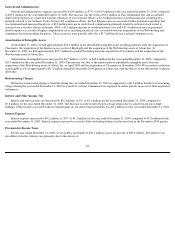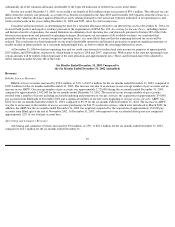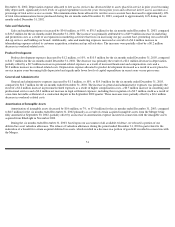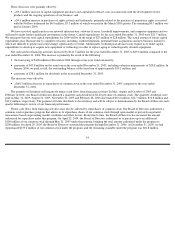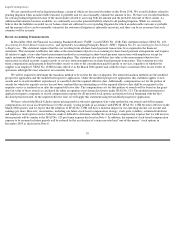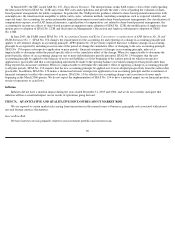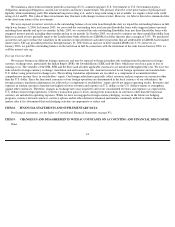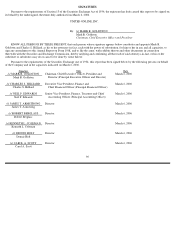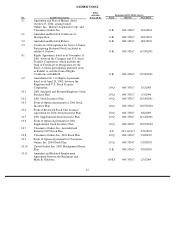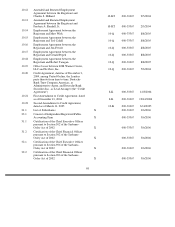Classmates.com 2005 Annual Report Download - page 59
Download and view the complete annual report
Please find page 59 of the 2005 Classmates.com annual report below. You can navigate through the pages in the report by either clicking on the pages listed below, or by using the keyword search tool below to find specific information within the annual report.
goodwill exceeds the implied fair value of that goodwill, an impairment loss would be recognized in an amount equal to the excess. In
accordance with SFAS No. 142, we performed an annual goodwill impairment test during the December 2005 quarter and concluded that, at that
time, there was no impairment of our goodwill.
Goodwill increased by $76.5 million and $4.0 million during the years ended December 31, 2004 and 2005 as a result of acquisitions (see
Note 2 to the consolidated financial statements). We recorded a reduction in goodwill of $9.5 million during the December 2004 quarter in
connection with the release of the deferred tax valuation allowance (see Note 3 to the consolidated financial statements).
Business Combinations
Our acquisitions to date have all been accounted for as purchase business combinations. Under the purchase method of accounting, the cost,
including transaction costs, is allocated to the underlying net assets, based on their respective estimated fair values. The excess of the purchase
price over the estimated fair values of the net assets acquired is recorded as goodwill.
The judgments made in determining the estimated fair values and expected useful lives assigned to each class of assets and liabilities
acquired can significantly impact net income. For example, different classes of assets will have useful lives that differ (e.g., the useful life of
acquired users may not be the same as the useful life of acquired technologies). Consequently, to the extent a longer-lived asset is ascribed
greater value under the purchase method than a shorter-lived asset, there may be less amortization recorded in a given period. Definite-lived
identifiable intangible assets are amortized on either a straight-line basis or an accelerated basis. We determine the appropriate amortization
method by performing an analysis of expected cash flows over the expected useful life of the asset and match the amortization expense to the
expected cash flows from those assets.
Determining the fair value of certain assets and liabilities acquired is subjective in nature and often involves the use of significant estimates
and assumptions. We use a one-year period following the consummation of acquisitions to finalize estimates of the fair values of assets and
liabilities acquired. Two areas, in particular, that require significant judgment are estimating the fair values and related useful lives of identifiable
intangible assets. To assist in this process, we may obtain appraisals from valuation specialists for certain intangible assets. While there are a
number of different methods used in estimating the value of acquired intangibles, there are two approaches primarily used: the discounted cash
flow and market comparison approaches. Some of the more significant estimates and assumptions inherent in the two approaches include:
projected future cash flows (including timing); discount rate reflecting the risk inherent in the future cash flows; perpetual growth rate;
determination of appropriate market comparables; and the determination of whether a premium or a discount should be applied to comparables.
Most of the foregoing assumptions are made based on available historical information.
Income Taxes
Income taxes are accounted for under SFAS No. 109. Under SFAS No. 109, deferred tax assets and liabilities are determined based on
differences between the financial reporting and tax basis of assets and liabilities and are measured using the enacted tax rates and laws that will
be in effect when the differences are expected to reverse. A valuation allowance is established when necessary to reduce deferred tax assets to
the amount expected to be realized. In determining the need for a valuation allowance, we review both positive and negative evidence pursuant
to the requirements of SFAS No. 109, including current and historical results of operations, the annual limitation on utilization of net operating
loss carryforwards pursuant to Section 382 of the Code, future income projections and potential tax-planning strategies.
58


